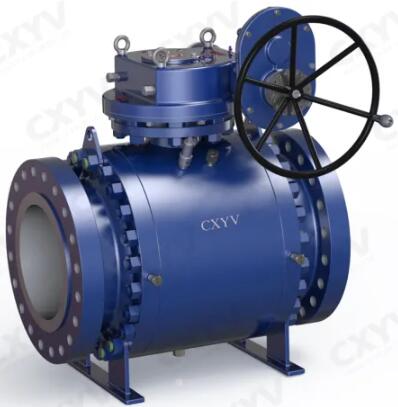What Is The Difference Between A Floating Ball And A Trunnion Mounted Ball Valve?
What is the difference between a floating ball and a trunnion mounted ball valve? Ball valves are widely used in various industries for controlling fluid flow
Ball valves are widely used in various industries for controlling fluid flow. One common classification of ball valves is based on the design of the ball inside the valve body - floating ball and trunnion mounted ball valves.
Floating ball valves and trunnion mounted ball valves are named based on how the ball is supported within the valve. Understanding the differences between these two types of valves is crucial for selecting the right valve for your specific application. Let's delve into the dissimilarities and advantages of each type.

Floating Ball Valves:
Floating ball valves, as the name suggests, have a ball that floats and moves slightly downstream when the valve is closed. The ball is held in place only by the compressed fluid pressure from both ends of the valve body. This design is suitable for low to medium pressure applications.
The primary advantage of floating ball valves is their ability to provide a tight seal even at low pressures. This is due to the floating ball's natural tendency to be pushed against the valve seat as the fluid pressure increases. As a result, floating ball valves offer excellent sealing performance, preventing any leakage.
Another advantage of floating ball valves is their lower torque requirement, making them easier to operate. This is because the ball only contacts the valve seats at two points. However, their design limits their use in high-pressure applications due to the potential for damage to the valve seat over time.
Trunnion Mounted Ball Valves:
Trunnion mounted ball valves are designed with an additional mechanical anchoring of the ball at the top and bottom, known as trunnions. These trunnions allow the ball to pivot, reducing the operating torque required for turning the valve. This design is suitable for high-pressure applications.
One of the main advantages of trunnion mounted ball valves is their enhanced stability and resistance to high pressures. The trunnions provide additional support to the ball, preventing it from being dislodged or damaged by the fluid pressure. This makes trunnion mounted ball valves ideal for applications where high pressures are involved.
Moreover, trunnion mounted ball valves offer better control in larger sizes and higher flow rates due to their superior stability and sealing capabilities. Additionally, this type of valve can accommodate different seat materials, allowing for greater flexibility in choosing the right material for specific media or operating conditions.
Closing Words:
In conclusion, the main difference between a floating ball valve and a trunnion mounted ball valve lies in how the ball is supported within the valve body. Floating ball valves are suitable for low to medium pressure applications and offer excellent sealing performance, while trunnion mounted ball valves are better suited for high-pressure applications and provide enhanced stability.
When selecting the right valve for your needs, it is essential to consider factors such as pressure requirements, fluid characteristics, and operating conditions. Consulting a reliable trunnion mounted ball valve supplier is crucial to ensure you get the right valve for your application.
If you are looking for a trustworthy and experienced valve supplier, do not hesitate to contact us. We offer a wide range of high-quality trunnion mounted ball valves and other valve solutions to meet your specific requirements.